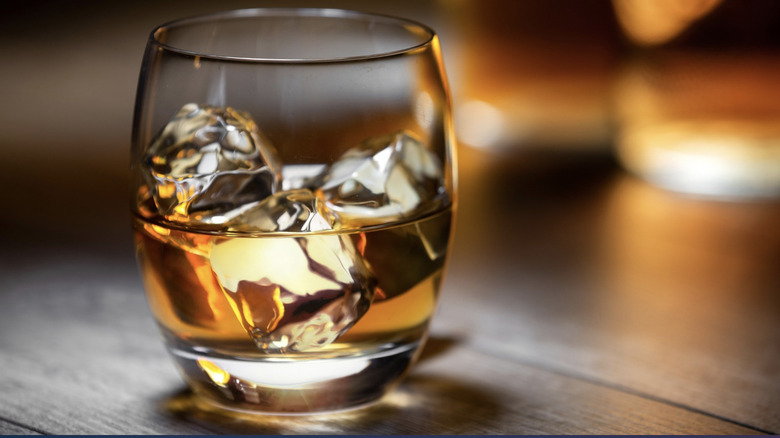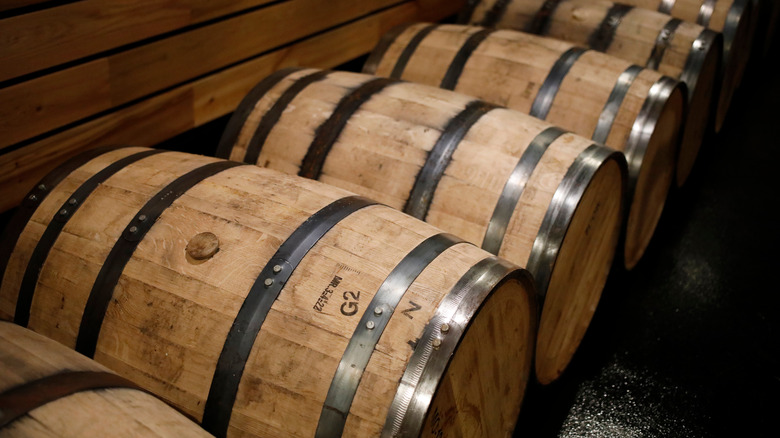Your Favorite Bourbon Could Be Facing A Shortage Soon
Bourbon lovers may want to start clinging to their favorite bottle a little tighter, as there could be an impending supply shortage. Bourbon aficionados know that bourbon is different from whiskey because, for whiskey to qualify as bourbon, it must be distilled in new oak barrels. Many distilleries use white oak, which comes at a premium price. The white oak wood helps to ensure the barrel maintains a watertight seal, which is why many distillers choose it for making bourbon. While this sounds good, white oak trees could be in short supply in the coming years, thus creating a problem for distillers and bourbon drinkers.
Calvin Norman, a forestry professor, sounded the alarm on the impending shortage. On Bloomberg's "Odd Lots" podcast, Norman said, "When we look to the next generation of white oak, there's very little. We're looking at like a 77% population decline if nothing changes today." White oak trees are not only fussy, but this crop is also hard to maintain and keep clear of invasive insects. Bourbons like Maker's Mark, Jim Beam, and Van Winkle rely on white oak barrels, as do many smaller brands and independent distillers. An estimated 10% of the white oak supply in the United States goes to the bourbon industry.
What is being done to solve the white oak shortage?
The White Oak Initiative was created to help ensure a sustainable future for the trees and ensure bourbon can be enjoyed for the foreseeable future. Large bourbon companies like Sazerac and Beam Suntory help fund the initiative, which, in turn, helps ensure the companies can keep producing bourbon for their customers. Part of what The White Oak Initiative does is working to make plans for issues like tree rot or diseases, managing forests so the trees can get ample sunlight, and devising strategies to ensure the long-term sustainability of white oak trees.
White oak trees aren't even harvested until the trees reach 80-100 years old, past most human lifespans, which helps illustrate the importance of long-term sustainability. Each white oak barrel is made from 31-35 planks of wood, called staves, which are held together with metal hoops and rivets. To impart bourbon's signature smoky flavor, the barrels are expertly charred before the liquor goes in. The process of making bourbon is extensive, and the liquor ages for two years (minimum) before it's ready to hit the shelves. Another primary issue with white oak barrels, which could pose a bigger problem if a shortage does occur, is that they can only be used once for bourbon distillation. Instead of wasting the barrel and tossing it in the trash, they are often sent to other alcohol distillers to age tequila, wine, and other liquors.

